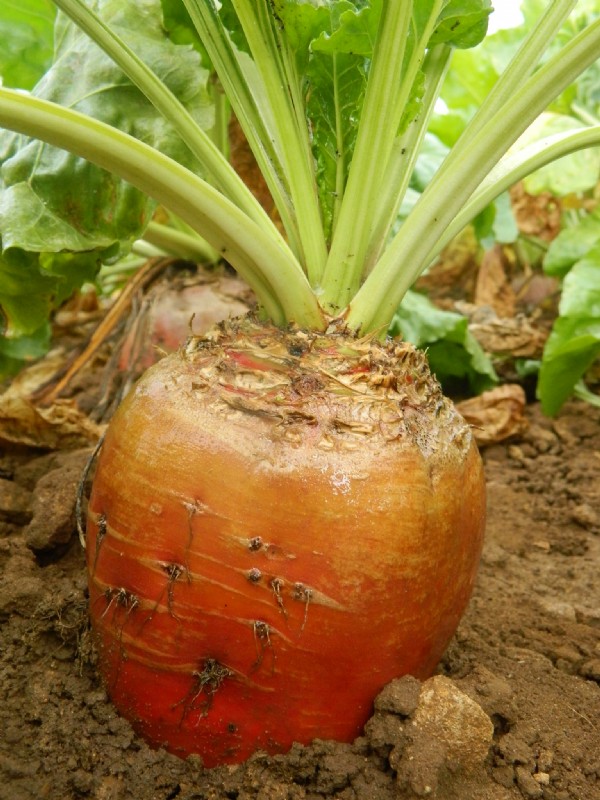

The period from late March through to April is the prime time for sowing fodder beet which can be a very useful livestock food source, offering one of the highest yield potentials of any other arable fodder crop. The root can contain up to 13.5 MJ/KG of metabolisable energy so it can be utilized to provide high energy fodder when grass growth drops over the winter, as well as reducing the need to buy in expensive bulk foods when silage stocks are low. Livestock can graze the leafy green tops and roots in the field or eat the green residues that are left on the land after the main crop has been harvested and sold.
Traditionally fodder beet has been used as an over wintering food source for the dairy sector, however the beef sector also benefits from this crop, often by using chopped beet to improve daily live weight gain. Sheep can also be fed on fodder beet with some owners topping and lifting the beet before storing it in a clamp and then feeding their animals on the green tops that remain behind. There have been concerns over old ewes and young lambs damaging their teeth when being fed whole beet roots so it may be beneficial to chop beet that is being fed to this age group of stock.
One of the most popular ways of overwintering stock on fodder beet is to use an in-situ strip grazing system with electric fences. This allows the maximum uptake of the crop in the field and reduces the amount of crop that is spoiled or wasted by trampling. Grazing in-situ can reduce machinery costs by not having to transport food to the stock and the crop can be eaten in the ground, therefore removing harvesting costs. Overwintering in situ can reduce the pressure on stock housing needs and extend the growing period of pastures.
It is important to choose a field that is suitably free draining, with a gentle slope and not susceptible to flooding. Direct drilling can improve the suitability for over wintering by improving soil moisture retention, which is important for good establishment and providing a firmer surface which reduces the churning up of the ground during winter.
Different varieties of fodder beet are scored according to yield, dry matter content and the percentage of root growth. Some varieties have a large yield which gives them a high overall dry matter (DM) content above the average of 12-19%, while others may provide more green top or have a smooth skin finish which helps lower problems with dirt and soil during harvesting.
Fodder beet should be sown when the soil temperature is above 5°C and growing conditions are suitable. Delaying the drilling of a crop may lead to a reduction in yield while drilling the crop too early could cause bolting issues during a late harvest. During establishment the crop does not compete well with weeds so it is important to use stale seed bed techniques with glyphosate to produce a weed free seed bed. A pre emergence herbicide maybe applied straight after drilling and once the crop is growing it is advisable to keep on top of weeds with a post emergence herbicide programme.
In the 2014 season we have seen an increasing interest in the use of fodder beet. Many growers are identifying the opportunity to reduce the buying of costly concentrate feeds and take advantage of a high quality crop that provides impressive live-weight gains in the diary, beef and sheep industry.
Varietal choice
For those wishing to graze the crop in-situ we advise using the variety 'Robbos' which has a medium dry matter and sits with roughly 59% of the bulb above ground giving easy access to grazing stock.
For lifting and conserving we advise using the variety 'Blizzard' which sits deeper in the ground making it more suitable for lifting with sugar beet machinery. This variety has a high dry matter yield and is also suitable for the increasing biogas market.
Date Posted: 30th March 2017



